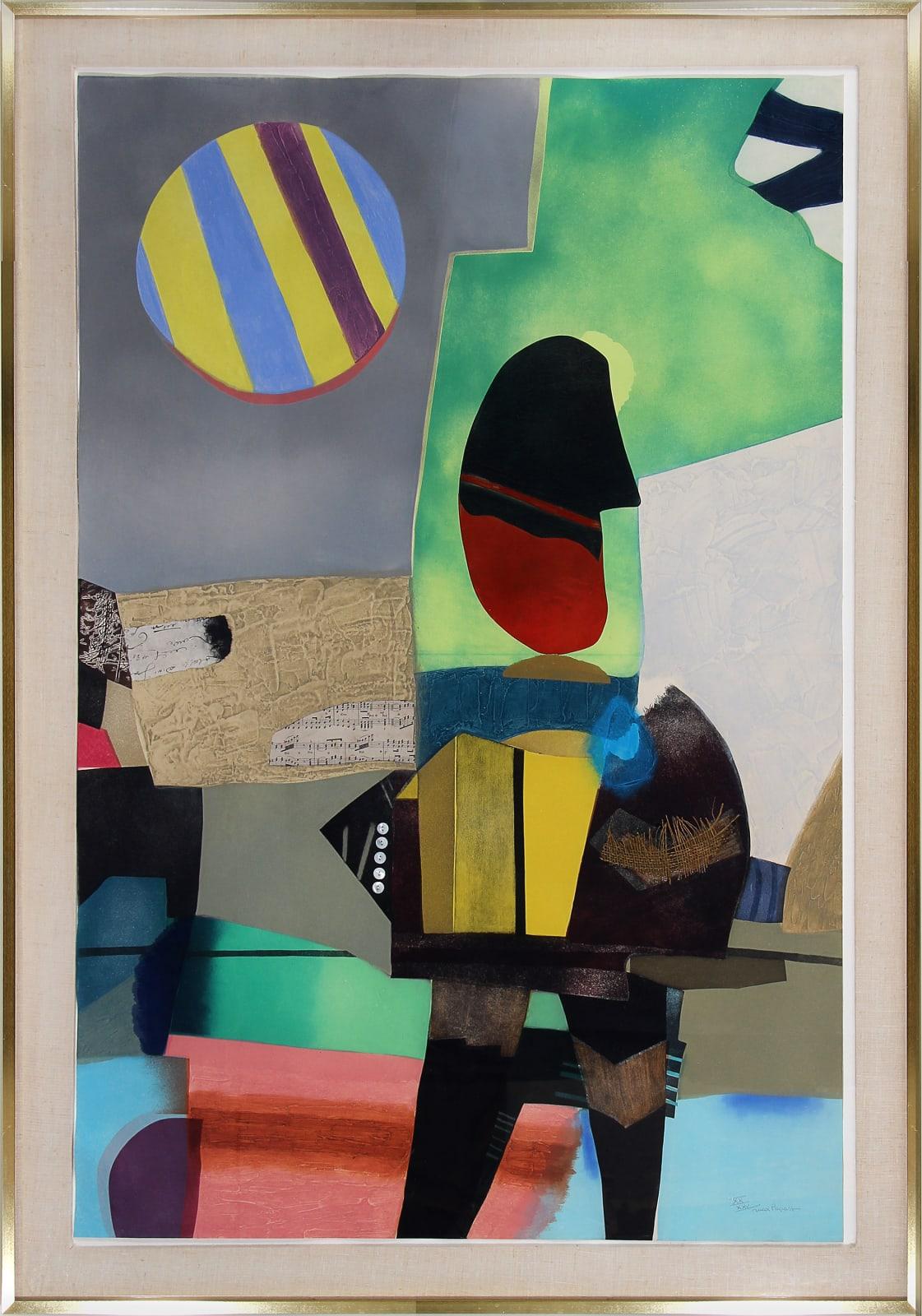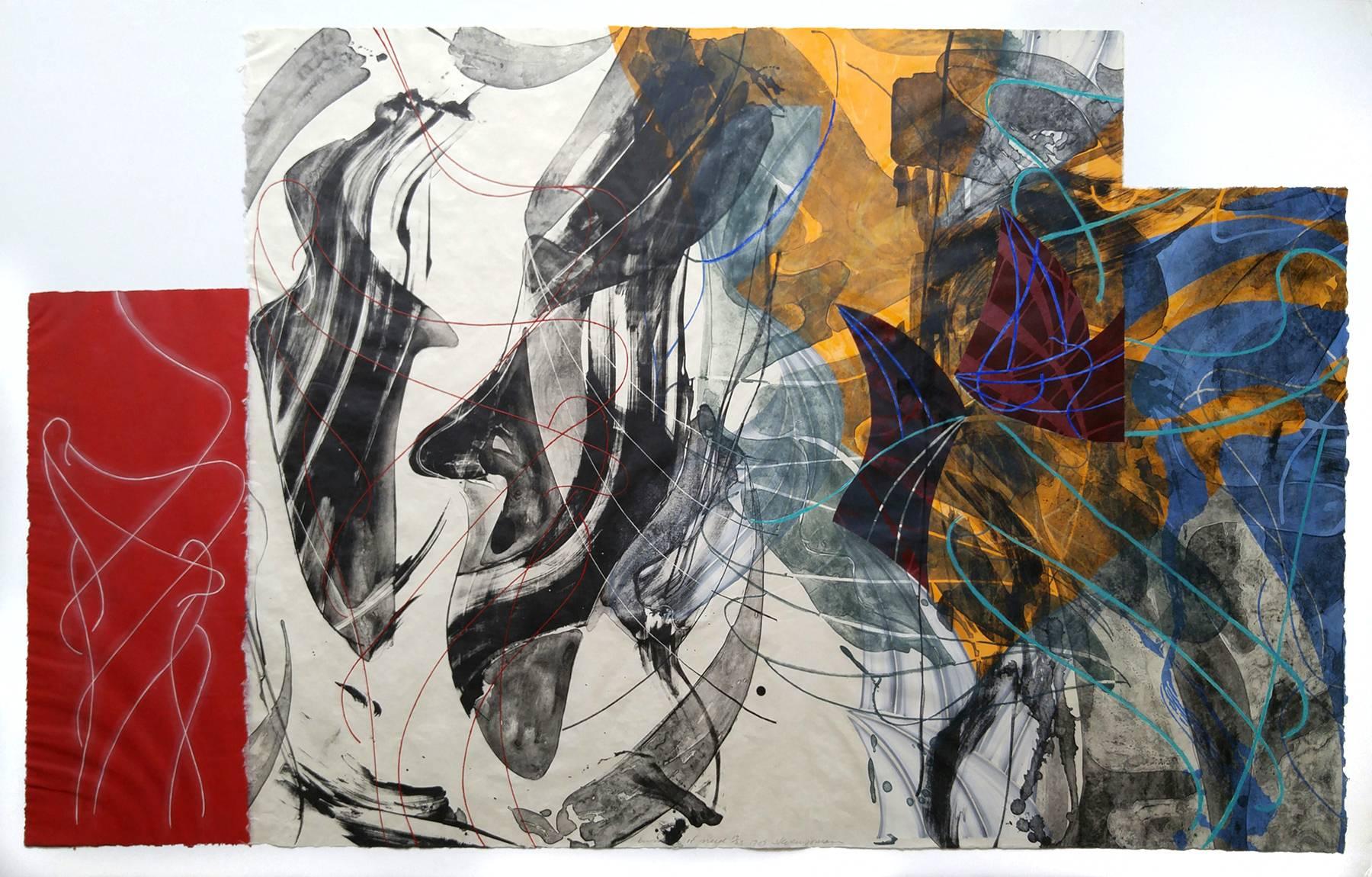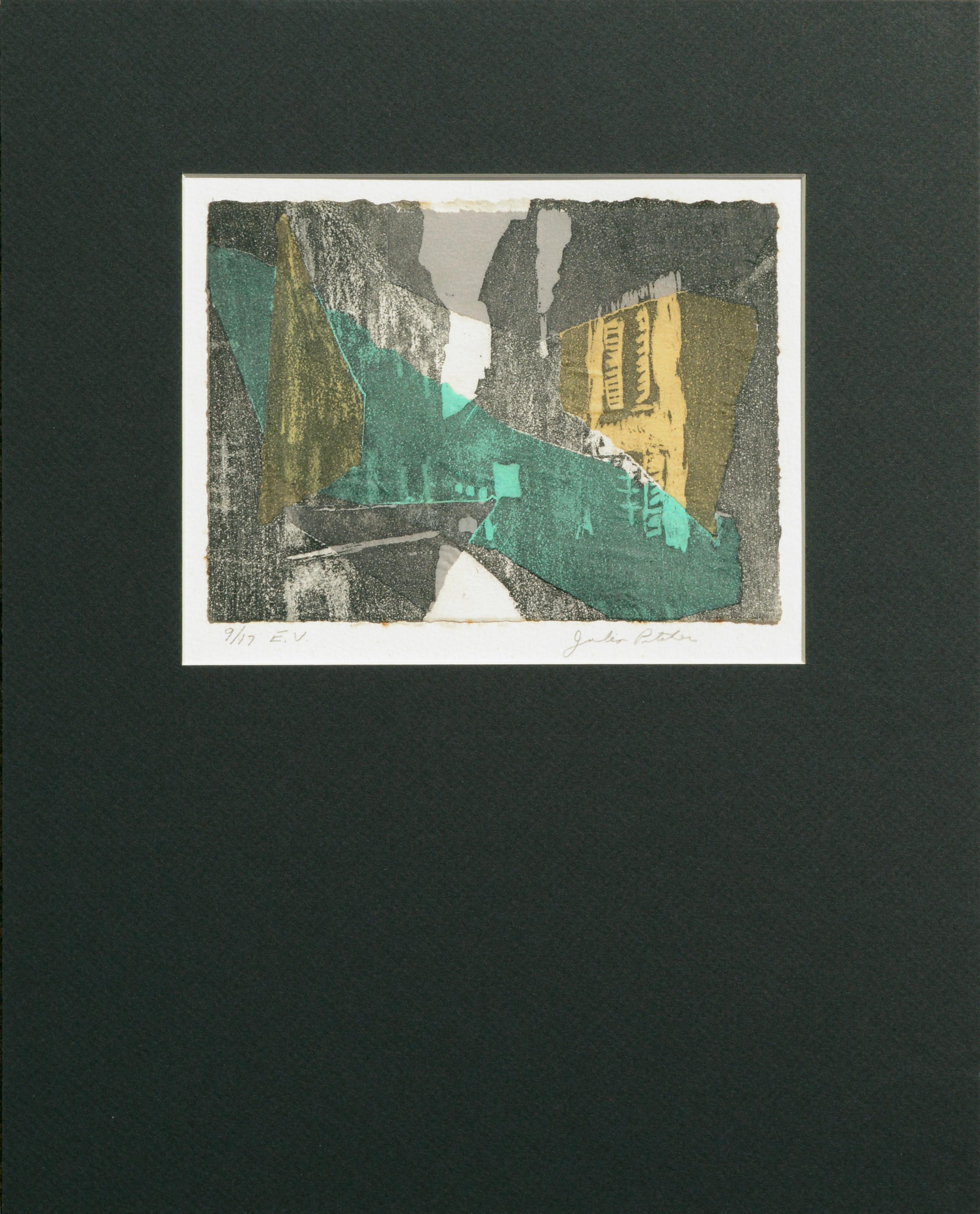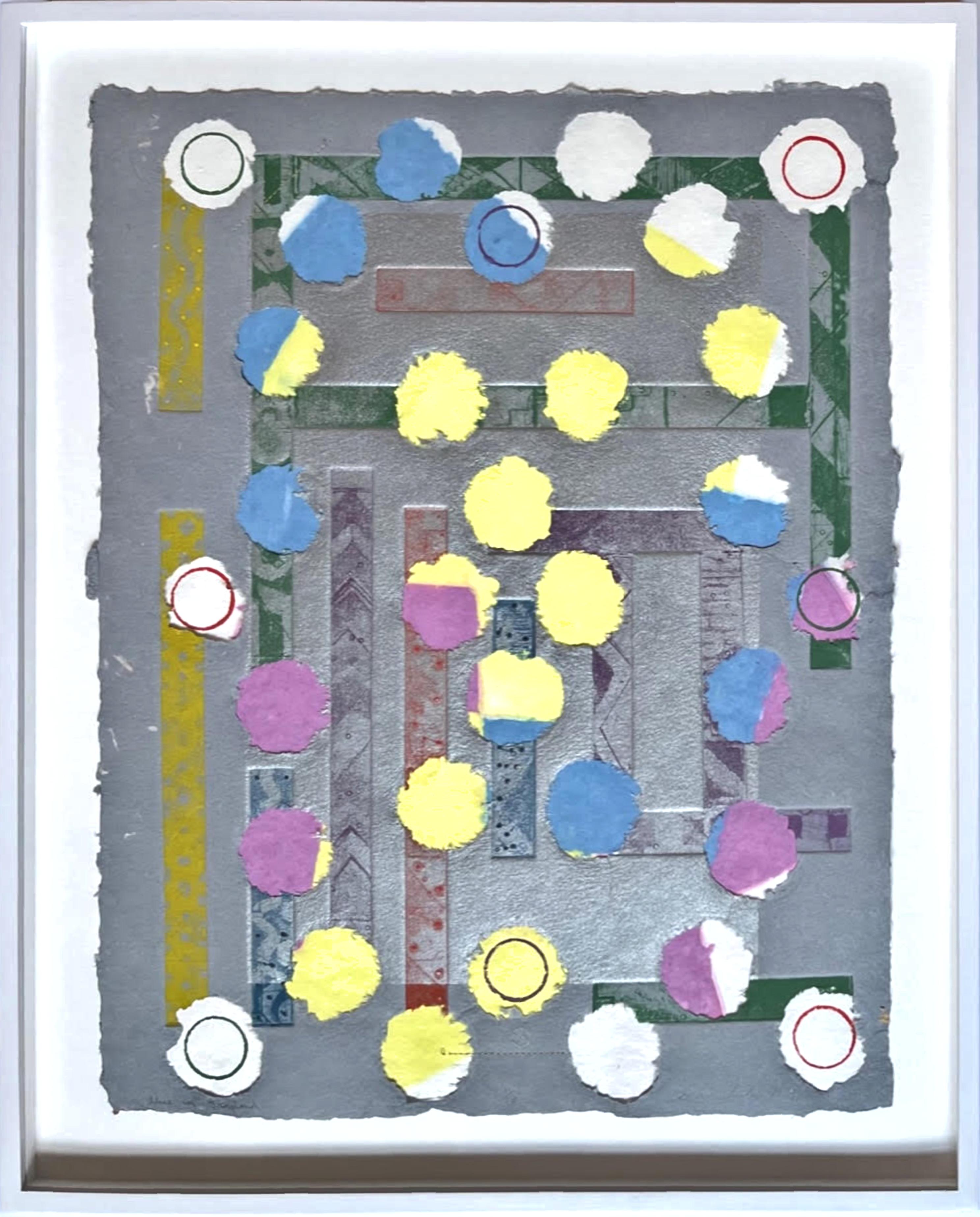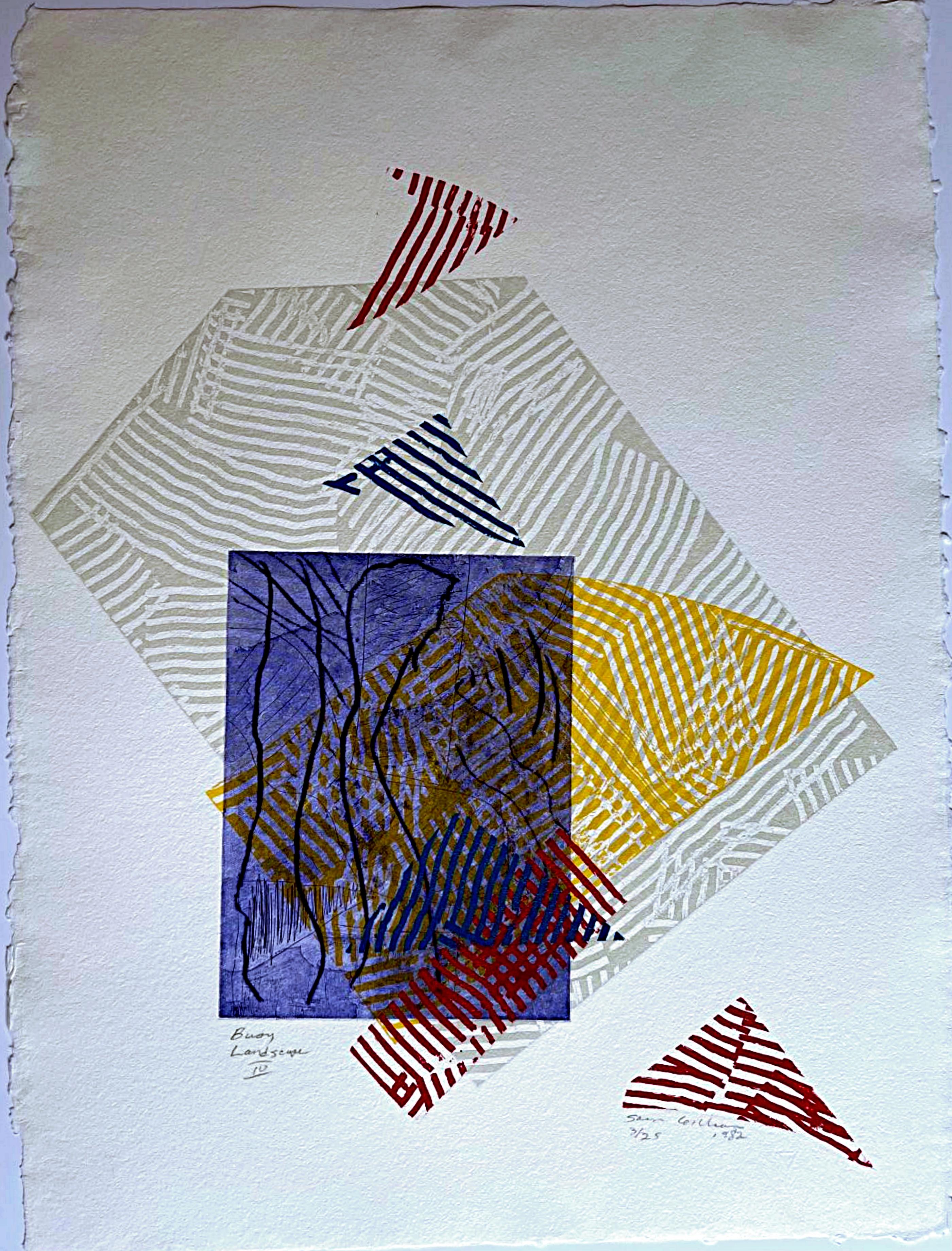Antoni TàpiesLe Cadre Noir1976
1976
About the Item
- Creator:Antoni Tàpies (1923 - 2012, Spanish)
- Creation Year:1976
- Dimensions:Height: 25.25 in (64.14 cm)Width: 32 in (81.28 cm)Depth: 2.5 in (6.35 cm)
- Medium:
- Movement & Style:
- Period:
- Condition:
- Gallery Location:San Francisco, CA
- Reference Number:
Antoni Tàpies
Antoni Tàpies is considered to be Spain's most important painter after Picasso. His work is in the collections of the most important modern and contemporary museums around the world, as well as those of the most notable private collectors. Tàpies’s ultra-typical style was an almost industrial look, expressionistic slashes, thick impasto, rough and impassioned.
- ShippingRetrieving quote...Ships From: San Francisco, CA
- Return PolicyA return for this item may be initiated within 7 days of delivery.
- Untitled CompositionBy Antoni TàpiesLocated in San Francisco, CAArtist: Antoni Tapies – Spanish (1923- 2012) Title: Untitled, from Paroles Peintes IV, published by O. Lazar-Vernet, Paris Date: 1970 Medium: Etching and aquatint in colors on BFK Ri...Category
1970s Abstract Abstract Prints
MaterialsEtching, Aquatint
- "Curvy Brushstrokes" Large etching with aquatint, framedBy Sol LeWittLocated in San Francisco, CAThis artwork titled "Curvy Brushstrokes" 1997 is a colors etching with sugar lift aquatint on Somerset textured white paper by renown artist Sol (Solomon) LeWitt, 1928-2007. It is hand signed and numbered 1/15 in pencil by the artist. The image size is 29.90 x 39.90 inches, paper sheet size is 40.5 x 49.80 inches, framed size is 43.75 x 53 inches. Published by Crown Point Press, San Francisco, printed by Dana Sywulak, assisted by Dena Schneleit, Mary Andrews and Case Hudson at Crown Press, San Francisco. Referenced and pictured in the artist's catalogue raisonne, plate #1997.07. Custom framed in a wooden black frame, floated on white backing, with white spacer. It is in excellent condition, the frame has minor very small restorations, practically invisible. About the artist: Known for his modular white cube sculpture, geometric drawings and abstract design paintings including many wall paintings that took teams of people to execute, Sol LeWitt was a major promoter of dominant post World War II Conceptualism and Minimalism. He used geometric shapes and lines to challenge his viewers, and sometimes they seemed logical and other times they seemed to have no basis in either reason or reality. Although he was highly active in New York City, he shied away from any semblance of art celebrity life style and spent much of his later life working from his home and studio in Chester, Connecticut. At the beginning of his career when he was gaining notoriety, conservative critics panned him fiercely. Seeking to get away from the frenetic activity of the New York art scene, he went to Spoleto, Italy in the 1980s and remained there for many years. The influence of Italian culture seemed to lend a new opulent quality to his work, and also the launching of his wall paintings, which he called drawings even though they were done with acrylic paint. "He began making colored flagstone patterns, spiky sculptural blobs and ribbons of color, like streamers on New Year's Eve, often as enormous decorations for buildings around the world. It was if he had devised a latter-day kind of Abstract Expressionism . . ." (Kimmelman) Of his personal modesty it was written: "He tried to suppress all interest in him as opposed to his work; he turned down awards and was camera-shy and reluctant to grant interviews. He particularly disliked the prospect of having his photograph in the newspaper." (Kimmelman) Sol LeWitt was born in Hartford, Connecticut to Russian immigrant parents. His father, a doctor, died when Sol was age six, and he and his mother then went to live with an aunt in New Britain, Connecticut. His mother encouraged his art talent, and enrolled him in classes at the Wadsworth Atheneum. LeWitt's subsequent residence in Chester, after he was a well-known artist, was near the Atheneum, and he became a strong supporter of that institution including the securing of a long time loan to it of a highly prestigious private collection of modern art. LeWitt earned a B.F.A. degree from Syracuse University in 1949, and then was drafted in the Korean War. His special assignment was making posters for the Special Services. From 1955 to 1956, he worked as a graphic designer for architect I.M. Pei, who was beginning his career. He also did pasteups for Seventeen magazine...Category
Late 20th Century Abstract Abstract Prints
MaterialsEtching, Aquatint
- "Color and Black" Large colors etching with aquatint, framedBy Sol LeWittLocated in San Francisco, CAThis artwork titled "Color and Black #3" 1991 is a colors etching with spit bit aquatint on Somerset textured white paper by renown artist Sol (Solomon) Le Witt, 1928-2007. It is and signed and numbered 11/15 in pencil by the artist. Whit the blind stamp of the publisher/printer at the lower right corner. The image size is 22.75 x 22.75 inches, paper sheet is 40.75 x 39.75 inches, Framed size is 43.25 x 42,5 inches. Published by Crown Point Press, San Francisco. Printed by Lawrence Hamin, Lothar Osterburg, Paul Mullowney and Pamela Paulson at Crown Point Press, San Francisco. Referenced and pictured in the artist's catalogue raisonne #1991.07, plate #03. Custom Framed in a wooden black frame, floated on a white backing, with white spacer. It is in excellent condition. About the artist: Known for his modular white cube sculpture, geometric drawings and abstract design paintings including many wall paintings that took teams of people to execute, Sol LeWitt was a major promoter of dominant post World War II Conceptualism and Minimalism. He used geometric shapes and lines to challenge his viewers, and sometimes they seemed logical and other times they seemed to have no basis in either reason or reality. Although he was highly active in New York City, he shied away from any semblance of art celebrity life style and spent much of his later life working from his home and studio in Chester, Connecticut. At the beginning of his career when he was gaining notoriety, conservative critics panned him fiercely. Seeking to get away from the frenetic activity of the New York art scene, he went to Spoleto, Italy in the 1980s and remained there for many years. The influence of Italian culture seemed to lend a new opulent quality to his work, and also the launching of his wall paintings, which he called drawings even though they were done with acrylic paint. "He began making colored flagstone patterns, spiky sculptural blobs and ribbons of color, like streamers on New Year's Eve, often as enormous decorations for buildings around the world. It was if he had devised a latter-day kind of Abstract Expressionism . . ." (Kimmelman) Of his personal modesty it was written: "He tried to suppress all interest in him as opposed to his work; he turned down awards and was camera-shy and reluctant to grant interviews. He particularly disliked the prospect of having his photograph in the newspaper." (Kimmelman) Sol LeWitt was born in Hartford, Connecticut to Russian immigrant parents. His father, a doctor, died when Sol was age six, and he and his mother then went to live with an aunt in New Britain, Connecticut. His mother encouraged his art talent, and enrolled him in classes at the Wadsworth Atheneum. LeWitt's subsequent residence in Chester, after he was a well-known artist, was near the Atheneum, and he became a strong supporter of that institution including the securing of a long time loan to it of a highly prestigious private collection of modern art. LeWitt earned a B.F.A. degree from Syracuse University in 1949, and then was drafted in the Korean War. His special assignment was making posters for the Special Services. From 1955 to 1956, he worked as a graphic designer for architect I.M. Pei, who was beginning his career. He also did pasteups for Seventeen magazine...Category
Late 20th Century Abstract Abstract Prints
MaterialsEtching, Aquatint
- Sans Titre IILocated in San Francisco, CAThis artwork "Sans Titre II" c.1980 is an original color etching with aquatint on Arches paper by noted French abstract expressionist artist Francois Rouan...Category
Late 20th Century Abstract Expressionist Abstract Prints
MaterialsEtching, Aquatint
- Son AbrinesBy Joan MiróLocated in San Francisco, CA"Son Abrines" Original etching with aquatint printed on Guarro paper. Ink stamp signed, numbered 23/75 in pencil. Also hand signed in pencil on the back by the grand son of the artis...Category
1980s Abstract Abstract Prints
MaterialsAquatint
- Process LandscapeBy Tom MarioniLocated in San Francisco, CAArtist: Tom Marioni – American (1937- ) Title: Process Landscape 1998 Year: 1998 Medium: Color spit bite aquatint Image size: 15.75 x 10 inches. Paper size: 20 x 16 inches Framed size: 21.75 x 17.75 inches Signature: Signed, dated lower right Edition: 50. This one: 24/50. Published by: Crown Point Press Printed by: Paul Mullowney Condition: Excellent Frame: Framed in maple frame and plexiglas. Frame in fair to good condition with some small scratches. Tom Marioni was born in 1937 in Cincinnati, Ohio, attended the Cincinnati Art Academy, and in 1959 moved to San Francisco, where he still lives. His first sound work, One Second Sculpture, 1969, was celebrated in the 2005 Lyon Biennial as presaging the work of many artists today who use sound and duration as subjects. His first museum show was in 1970 at the Oakland Museum of California. Titled “The Act of Drinking Beer with Friends is the Highest Form of Art,” it was an early example of social art as a sculpture action. Over the years, Marioni was invited to repeat the work in various contexts around the world. In 1970 Marioni founded the Museum of Conceptual Art (MOCA), which he described at the time as “a large-scale social work of art.” Until the museum closed in 1984, he organized many groundbreaking shows, including “Sound Sculpture As” in 1970. MOCA has entered history as one of the first alternative art spaces. Marioni had one-person shows in several significant venues for early conceptual art, among them the Richard Demarco Gallery in Edinburgh in 1972 and Gallery Foksal in Warsaw in 1975. In 1977 he had a solo show, “The Sound of Flight,” at the de Young Museum in San Francisco. He has done installation/performance works at the Whitechapel Gallery in London (1972), the Institute of Contemporary Art in London (1973), the Centre Georges Pompidou in Paris (1980), and the Folkwang Museum in Essen, Germany (1982), among other museums. He has produced sound works for radio stations KPFA in Berkeley and WDR in Cologne, Germany. In 1996 he organized The Art Orchestra and the group performed at the Legion of Honor Museum in San Francisco. Marioni was included in “For Eyes and Ears” (1980) at the Academy of Fine Arts in Berlin, “Live to Air” (1982) at the Tate Gallery in London, and “From Sound to Image” (1985) at the Stuttgart Staatsgalerie in Germany. His work was shown in “Out of Actions: Between Performance and the Object” (1998) at the Museum of Contemporary Art in Los Angeles, and “The Third Mind: American Artists Contemplate Asia,” (2009) at the Guggenheim Museum in New York City. Drawing is central to Marioni’s art, and in 1999 he had a drawing retrospective, with a catalog, at the Mills College Art Museum in Oakland. In 2006 the Contemporary Art Center in Cincinnati presented a survey of his work and published a catalog. Marioni is the author of Beer, Art and Philosophy, 2003, a memoir, also Writings on Art 1969-1999, and Fabliaux Tom Marioni Fairy Tales. He was editor/designer of VISION magazine published by Crown Point Press, 1975-1981. Issues were titled “California,” “Eastern Europe,” “New York City,” “Word Of Mouth,” (phonograph records) and “Artist’s Photographs,” and published prints, since 1974. Tom Marioni received a Guggenheim Fellowship in 1981 and three grants from the National Endowment for the Arts during the 1970s. His work is in the collections of the San Francisco Museum of Modern Art, the Museum of Modern Art in New York, the Stadtische Kunsthalle in Mannheim, Germany, the Pompidou Center in Paris, and other museums. He is represented by the Anglim Gilbert Gallery...Category
1990s Abstract Impressionist Abstract Prints
MaterialsPaper, Aquatint
- The Accordian PlayerBy Max PapartLocated in New York, NYdeluxe limited edition of 25 medium: etching, aquatint, with carborundum, collage on paper year: 1980 paper size: 58" x 38" image size: 58" x 38" (145 x 98 cm.) frame size: 65.5" x...Category
Late 20th Century Abstract Impressionist Figurative Prints
MaterialsMixed Media, Etching, Aquatint, Lithograph
- Burden of Need, 39x64 Multi media with hand coloring and collageBy Steven SormanLocated in Southampton, NYSteve Sorman has had over 80 solo artist exhibitions throughout the United States . I have included, just for reference, some images of his museum show so that you can see the body...Category
1980s Abstract Abstract Prints
MaterialsOil Pastel, Ink, Mixed Media, Handmade Paper, Aquatint
- Abstract Modern Cityscape with Yellow & GreenBy Julia PitcherLocated in Soquel, CALimited editions layered paper and etching composition of an abstracted urban landscape, with fractured yellow and green color fields, by Julia Pitcher (American, b. 1942). Numbered ...Category
Late 20th Century Abstract Impressionist Landscape Prints
MaterialsPaper, Ink, Mixed Media, Aquatint
- Pull Out All Flags (Engberg Banach 263) iconic abstract expressionist work 33/50By Robert MotherwellLocated in New York, NYRobert Motherwell Pull Out All Flags (Engberg, Banach 263), 1980 Aquatint and etching in colors, on German Etching paper, with full margins Hand-signed by artist, Pencil signed and n...Category
1980s Abstract Expressionist Abstract Prints
MaterialsMixed Media, Etching, Aquatint, Pencil, Graphite
- Alice in GraylandLocated in New York, NYAlan Shields Alice in Grayland, 1979 Mixed media collage: Etching, aquatint, screen print with stitching and collage on hand made paper Hand signed, dated, titled and numbered 1/13 by Alan Shields on the front Unique variant This very unique and imaginative mixed media paper collage with stitching and fabric is floated and framed in a museum quality white wood frame with UV plexiglass. It is hand signed, dated, titled and numbered from the limited edition of 13 - but each is a unique variant. Frame included: Measurements: Frame: 27.75 x 22.5 x 2 inches Artwork: 23.5 x 18 inches Catalogue Raisonne: K. Tyler Tyler Graphics: Catalogue Raisonné, 1974-1985, New York: Abbeville Press, 1987. p. 289. Alan Shields came of age artistically in the late 1960s in New York. Expanding the boundaries of Minimalism, he became known as a master of aesthetic invention through his wide-ranging exploration of materials and techniques. His mixed media works often contain combinations of traditional silkscreen processes combined with found materials. New York Times critic Roberta Smith wrote in her 2005 obituary for the artist: "Mr. Shields's work combined expanses of gorgeous stained color, reminiscent of Helen Frankenthaler's canvases, with the humbler crafts and a Gypsy sense of portability." Critic Robert Hughes has described Shields as a brilliant bricoleur who could, and often did, make art out of just about anything. He became an innovative printmaker, experimenting with handmade paper and turning out editions in which each print was unique. After his passing, Shields was awarded a Judith Rothschild Foundation grant given to recently deceased abstract artists whose work is of the highest quality but merits further recognition. About Alan Shields: Alan Shields (b. 1944, Herington, KS; d. 2005, Shelter Island, NY) created unique, imaginative, and theatrical structures using unconventional materials and vibrant color. His three-dimensional paintings convey a playful, deconstructive impulse through the incorporation of un-stretched hand-dyed canvas, rope, yarn, beads, and wood. Shields moved to New York City in 1968, where he showed with Paula Cooper...Category
1970s Abstract Expressionist Abstract Prints
MaterialsMixed Media, Handmade Paper, Etching, Aquatint, Screen
- Buoy Landscape IV, Mixed media signed/n limited edition Ab Ex relief printBy Sam GilliamLocated in New York, NYSam Gilliam Buoy Landscape IV, 1982 Color relief print, etching, screenprint, drypoint, aquatint and roulette all from deeply etched copper plates, on handmade wove paper 31 1/2 × 24 inches Hand signed and numbered 3/25 in graphite pencil Hand-signed by artist, Signed by artist, numbered, and dated in pencil and blind-stamped by printer-publisher on lower right, titled in pencil on lower left, recto Unframed with elegant deckled edges Rare vintage intaglio and relief, all from deeply etched copper plates. Other works from this series are in the permanent collections of major museums & institutions like the Smithsonian, so they are quite scarce on the open market. Steven M. Andersen (Printer) Philip Barber (Printer) Hang Nguyen (Printer) Stephanie Nowack (Printer) Michael Reid (Printer) Daniel Rounds (Printer) Vermillion Editions Limited (Publisher) Sam Gilliam Biography: Sam Gilliam was one of the great innovators in postwar American painting. He emerged from the Washington, D.C. scene in the mid 1960s with works that elaborated upon and disrupted the ethos of Color School painting. A series of formal breakthroughs would soon result in his canonical Drape paintings, which expanded upon the tenets of Abstract Expressionism in entirely new ways. Suspending stretcherless lengths of painted canvas from the walls or ceilings of exhibition spaces, Gilliam transformed his medium and the contexts in which it was viewed. As an artist in the nation’s capital at the height of the Civil Rights Movement, this was not merely an aesthetic proposition; it was a way of defining art’s role in a society undergoing dramatic change. Gilliam pursued a pioneering course in which experimentation was the only constant. Inspired by the improvisatory ethos of jazz, his lyrical abstractions took on an increasing variety of forms, moods, and materials. In addition to a traveling retrospective organized by the Corcoran Gallery of Art, Washington, D.C. in 2005, Sam Gilliam was the subject of solo exhibitions at the Museum of Modern Art, New York (1971); The Studio Museum in Harlem, New York (1982); Whitney Museum of American Art, Philip Morris Branch, New York (1993); J.B. Speed Memorial Museum, Louisville, Kentucky (1996); Phillips Collection, Washington, D.C. (2011); and Kunstmuseum Basel, Switzerland (2018), among many other institutions. A semi-permanent installation of Gilliam’s paintings opened at Dia:Beacon in August 2019. His work is included in over fifty public collections, including those of the Musée d’Art Moderne de la Ville de Paris; Tate Modern, London; the Museum of Modern Art, New York; the Metropolitan Museum of Art, New York; and the Art Institute of Chicago. Sam Gilliam, Green April, 1969, acrylic on canvas, 98 x 271 x 3 7/8 inches (248.9 x 688.3 x 9.8 cm), Collection of Kunstmuseum Basel, Basel, Switzerland, Courtesy of David Kordansky Gallery, Los Angeles, photography by Lee Thompson...Category
1980s Abstract Expressionist Abstract Prints
MaterialsMixed Media, Pencil, Graphite, Drypoint, Etching, Aquatint, Screen
